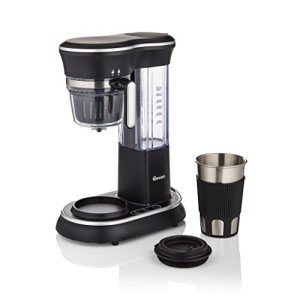Beans To Cup: A Simple Definition
From Beans to Cup: The Journey of Coffee
Coffee is more than just a beverage; it is a global phenomenon that brings people together, fuels early mornings, and stimulates discussions. The journey of coffee from beans to cup is a complex process including numerous actions and the know-how of various people. This short article serves to break down this fascinating journey, check out numerous brewing techniques, and answer some regularly asked concerns about this cherished beverage.
Tabulation:
- The Coffee Bean: The Seed of the Story
- Growing Coffee: An Agrarian Art
- Collecting: The Careful Collection
- Processing: From Cherry to Green Bean
- Roasting: The Transformation
- Developing Methods: Crafting the Perfect Cup
- Conclusion
- FAQs
1. The Coffee Bean: The Seed of the Story
Coffee beans are the seeds of the Coffea plant, primarily grown in tropical environments. The two primary types of coffee that control the marketplace are Coffea arabica (Arabica) and Coffea canephora (Robusta). Each type has special taste profiles, growth factors to consider, and chosen growing conditions.
Table 1: Differences Between Arabica and Robusta Coffee
Function
Arabica
Robusta
Taste
Sweeter, more nuanced
Stronger, more bitter
Caffeine material
Lower (1-1.5%)
Higher (2-2.5%)
Growing conditions
Higher altitude, cooler environment
Water level, warmer climates
Forming of beans
Oval, curved
Round, straighter
2. Growing Coffee: An Agrarian Art
The journey starts on a coffee farm where the beans are grown. Perfect conditions for coffee cultivation consist of well-draining soil, sufficient rainfall, and shade. Coffee trees can take 3 to 4 years to produce cherries, the fruit that houses the coffee beans. It is during this time that farmers should nurture the plants, making sure optimum growing conditions through:
- Proper irrigation: Ensuring adequate moisture
- Fertilization: Using organic and artificial choices
- Pest control: Keeping hazardous bugs at bay
3. Gathering: The Careful Collection
Coffee cherries are normally collected by hand, a labor-intensive procedure. There are two main approaches:
- Selective Picking: Mature cherries are chosen by hand, enabling a higher quality product.
- Strip Picking: All cherries are stripped from the branch, no matter ripeness, resulting in a mix of quality.
Harvesting generally takes place once a year, varying by area, with farmers intending to gather cherries at their peak ripeness.
4. Processing: From Cherry to Green Bean
Once collected, coffee cherries must be processed quickly to avoid spoilage. The processing techniques can greatly influence the final flavor of the coffee.
- Wet Processing: Cherries are depulped, fermented, and washed, leading to a cleaner taste.
- Dry Processing: Cherries are expanded in the sun to dry, which can impart fruity tastes.
After processing, the beans are hulled to eliminate the parchment layer, graded, and arranged by size and quality. This results in green coffee beans, which are all set for roasting.
5. Roasting: The Transformation
Roasting is a vital step in figuring out the flavor profile of coffee. Green beans are warmed in a roasting machine, transforming their chemical structure through a series of complex reactions understood as the Maillard reaction and caramelization. The degree of roasting— light, medium, or dark— affects the last taste, scent, and body of the coffee.
Aspects Influencing the Roasting Process:
- Temperature: Higher temperature levels lead to darker roasts.
- Time: Longer roasting times develop more powerful flavors.
- Air flow: More air flow can promote even roasting and different taste notes.
6. Brewing Methods: Crafting the Perfect Cup
As soon as roasted, the coffee is ground to the desired coarseness, and the developing procedure starts. There are various techniques to brew coffee, each producing distinct tastes and experiences:
- Drip Coffee Maker: A popular technique for home brewing where warm water drips through coffee premises.
- French Press: A steeping approach that combines coarsely ground coffee with warm water, leading to an abundant flavor.
- Espresso: A technique that requires warm water through finely ground coffee, producing a focused shot.
- Put Over: A manual technique that allows precise control over water temperature level and pour rate.
Comparison of Brewing Methods:
Method
Flavor Profile
Participation Level
Time Required
Drip Coffee
Well balanced, classic
Low
5-10 minutes
French Press
Rich, full-bodied
Medium
4 minutes
Espresso
Strong, intense
High
25-30 seconds
Put Over
Clean, nuanced
Medium
3-4 minutes
7. Conclusion
The journey of coffee from bean to cup is a complex and remarkable process that involves cautious cultivation, harvesting, processing, roasting, and developing. Each step in this elaborate chain has a considerable influence on the flavor, aroma, and total satisfaction of the beverage. As consumers end up being more familiar with the origins and nuances of their coffee, they can make informed choices that improve their coffee-drinking experience while appreciating the hard work that enters into every cup.
FAQs
1. What is the best way to store coffee beans?
Coffee beans ought to be stored in an airtight container in a cool, dark location to preserve freshness. Compact Bean To Cup Coffee Machine storing them in the refrigerator or freezer, as moisture can negatively impact their quality.
2. How does the roast level affect the flavor?
The roast level substantially affects the flavor profile; light roasts keep more of the beans' original flavors, while dark roasts establish much deeper, more robust tastes due to the roasting procedure.
3. Can the brewing method change the caffeine content?
Yes, different brewing techniques might draw out varying amounts of caffeine. For example, espresso has a higher concentration, but a standard serving size is smaller sized than brewed coffee, resulting in similar caffeine content per cup.
4. How long should coffee be brewed?
Brewing times can differ by method. For instance, a French press usually requires about 4 minutes of soaking time, while a drip coffee maker might take 5-10 minutes.
Through comprehending the elaborate journey from beans to cup, coffee enthusiasts can deepen their appreciation for this precious beverage, enjoying each sip as a culmination of nature's bounty, human skill, and tradition.
